I jokingly tease many of my friends who can’t watch horror films. My love for the genre usually becomes something like a sermon whenever we talk about cinema. However, when you’re speaking with a person that has had years of terror-filled nightmares, you can guess that maybe peer pressure in those situations is not likely to make a fan out of anyone.
Horror has always been the outlier of the genres, and many people have a hard time with the over-the-top storytelling or shock-inducing blood and gore tactics. I’ve introduced friends to a few classics like Psycho and Night of the Living Dead. Films with relevant social themes are pretty tame by today’s standards. Still, horror has always been the extreme way to tell stories of injustice and moral abandon, but the genre provides catharsis through discussions on enacting social change. The kind of hyperbolic violent situations I’ve desensitized myself to over the years may be deemed excessive by prudes like Censor‘s Enid Baines (Niamh Algar), and, certainly, more than the average moviegoer is used to. My friends linger on the visuals, but I’ve always been able to see the forest through the trees, so to speak, when it comes to the art of crafting a superior horror film.

Censor is one of my absolute favorite horror titles to come out this past year. I reviewed the film back when it was released, but reviewers often don’t dive deep in our initial reviews for fear we may spoil the movie for those interested in seeing it upon release. Censor works as a love letter to the UK political scapegoat movies known as video nasties, and that is the way I approached the film when I first reviewed it. But, there was so much more I wanted to discuss after arriving at the film’s conclusion—particularly how it also serves as a fragile reminder about what our minds are capable of when trying to rectify trauma.
If you haven’t seen Censor yet, what follows is an in-depth discussion regarding the events in the film with many spoilers ahead.
Traumatic memory dissociation, sometimes presenting as amnesia, is a legitimate medical diagnosis and has been studied repeatedly for the past hundred years. In movies, we see these dissociations play out in many ways, from Norman Bates’ journey towards becoming his mother in Psycho to Joanne Woodward’s Academy Award-winning performance in The Three Faces of Eve. More recently, and far more subtly, the dinner party toast of Karyn Kusama’s The Invitation asks for the pain of its characters to be recognized as the motivation behind that film’s finale. The brain deals with trauma in a variety of fashions, and in the horror genre, we get a full spectrum spanning what-ifs and true-to-life accounts.
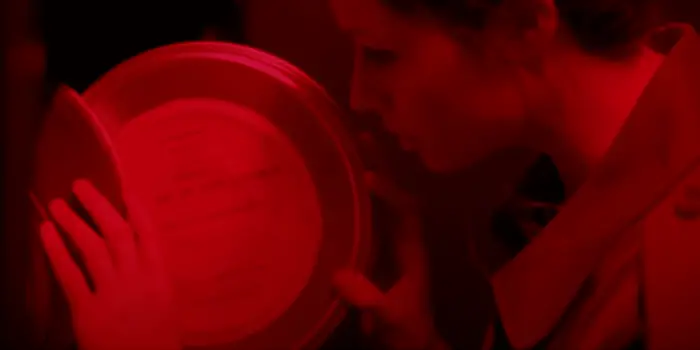
Censor’s Enid doesn’t detach to the point of having multiple personality disorder (clinically known as dissociative identity disorder)—we’ll dive deeper into that later on—or try to pull a Jim Jones on those around her. Still, she remains a tragic character doomed to recreate a history she cannot remember. And if she can’t remember, then it’s like it never happened. Her present-day actions cause her to pursue that memory, leading her down a rabbit hole of vicious, violent acts before forcing her brain to construct a happy ending instead of facing the truth.
Under the lens of severe childhood trauma, we examine Enid Baines. The titular Censor begins recalling a startling amount of her forgotten childhood experience after being told her sister, Nina, has been declared dead in absentia. Pushed to watch a resonating film, Don’t Go in the Church, Enid begins resurrecting her repressed memories. The film seems hauntingly familiar to her as if plucked from the vault inside her mind harboring the forgotten account. Then it is put on display for the world to cast its judgment.
While Enid may not be able to recount her sister Nina’s disappearance in the woods where they played as children, the swelling of this deleted scene from her otherwise reserved lifestyle serves as the kind of content too graphic to be seen by an audience. It’s therefore forbidden from making her memory’s final cut. Is it just a coincidence that the film terrifyingly parallels a forgotten memory about her sister? Further traumatized by the notion that her Nina has officially been declared dead, Enid starts projecting her sister’s memory onto Don’t Go in the Woods director Frederick North’s (Adrian Schiller) filmography-spanning muse, Alice Lee (Sophia La Porta).
Video Nasties and Satanic Panic
When Enid meets Frederick, he characterizes her as guarded and scared, and she confronts him about Don’t Go in the Church as if he knows something she doesn’t. Frederick tells her that the scene involving the two girls was, in fact, “inspired by a true story” and that all of the ideas in his films are “drawn from real life.” Frederick confesses,
People think that I create the horror, but I don’t. Horror is already out there, in all of us. It’s in you.
Frederick is right, and in this wonderfully conceived line channels Scream‘s Billy Loomis when he argues, “Don’t you blame the movies! Movies don’t create psychos. Movies make psychos more creative!”

Frederick is described as a “provocateur and a genius” in the film by producer Doug Smart (Michael Smiley), who tells Enid that Frederick pressed for her to view it specifically. The coincidence in her confrontation is that Frederick has no idea she’s one of the girls from the local legend he used in crafting Don’t Go in the Church‘s story—a small but revealing moment during the film’s finale. I like to consider the possibility that Doug targeted Enid after she’s held responsible for her leniency in rating the film Deranged. In the media, Enid is the face of scandal at the censorship office after passing the diegetic film without removing a cannibalistic face-eating scene credited as the inspiration for how a man murdered his family.
The film is likely referencing some of the UK’s darkest headlines: The Hungerford Massacre of 1987 and The Jamie Bulger Murder in 1993. Michael Ryan’s vicious Hungerford killing spree left seventeen dead and many more injured. Witnesses told the press that the mass shooter was “dressed liked Rambo,” and the films were blamed, despite it later coming out that Ryan had never seen any Rambo films.
In 1993, two-year-old Jamie Bulger was tortured and murdered at the hands of two ten-year-old children who abducted the boy while his mother was distracted at a butcher shop. Child’s Play 3 was found among the rentals of one of the boys’ fathers. Again, the film was blamed even though the boy wasn’t living with his father at the time and likely didn’t have access to it. Child’s Play 3 would again be cited in the brutal murder of Suzanne Capper. Once more, a movie would be exonerated, but not before the Daily Mirror succeeded in pushing for a ban on the film. Child’s Play 3 remained ostracized from store shelves in the UK until its release on DVD in 2000. Still, the media persisted with the headlines that led to studio delays for movies like Natural Born Killers and Reservoir Dogs in the UK.
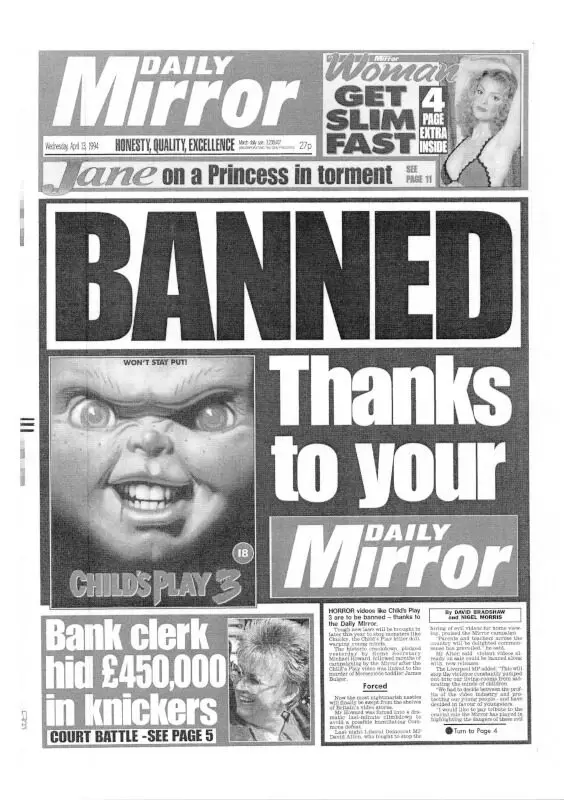
To understand Censor, you have to comprehend the impact of the timeframe in which it takes place. According to Mark McKenna, an estimated one and a half million UK households had adopted VCR technology by the summer of 1982, with the number projected to double by the year’s end. This new format allowed for a loophole in how distributors could move their titles since there was no governance for the new media. Films bypassing the British Board of Film Censors’ (BBFC) rating process and subsequent editing would go straight to the local video store shelves unedited without a rating. This infuriated BBFC secretary James Ferman, who stated, “They are watching shocking scenes which we would never allow in a cinema, even under an X-certificate.”
This, of course, was exacerbated in the media with Robert Fuoco quoting the Daily Mail in his Off Screen video nasty essay: “The video boom has meant that thousands of out-of-work, unstable teenagers are currently gorging themselves day-in-day-out on scenes of torture and depravity […] We need censorship at the moment as we have never needed it before. And if video censorship of the most stringent kind isn’t brought in pretty damned quick, we’re going to have an upsurge in violence and terror and abuse in our land and homes, the like of which we never suspected in our wildest terror.”
In truth, the government had found a way to unburden itself as the video nasties became an excellent scapegoat for a steadily rising crime rate due to an increasing unemployment crisis and inflation. Parliament.uk cites averages “over one million crimes recorded each year in the 1960s, increasing to two million during the 1970s, and three and a half million in the 1980s.”
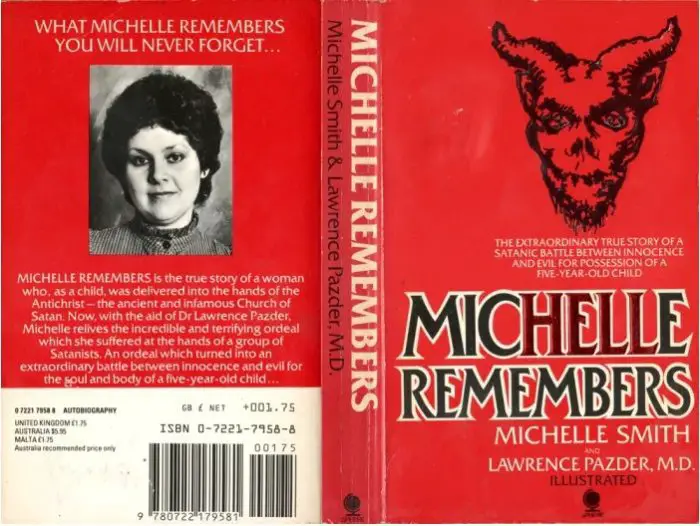
While the UK suffered through the video nasties era, the US was verging on dealing with its own censorship issues. In the United States, we came to know this time as The Satanic Panic era. America was being steered toward decency on the backend of the UK’s scapegoating of video nasties, essentially doing the same thing. A book called Michelle Remembers may have started the whole thing, and it’s based on memory repression involving a Satanic ritual. This created mass hysteria in the US, even after the book was debunked. Michelle Smith recovered her memory only after a series of interviews using discredited therapeutic techniques were implemented to coerce the narrative. Regardless, twelve thousand reports of unsubstantiated Satanic Ritual Abuse (SRA) derived from Michelle Smith’s account and lawmakers used cults like the Manson family and Jonestown as proof of moral decay despite any Satanic connection.
According to Vox’s
Tipper Gore would go a step further, becoming the face of a movement against the music industry. Gore was primarily responsible for changes that led to parental advisory stickers on albums in the late ’80s. There’s also an enjoyable episode of American Horror Stories called “Drive In” that uses Ms. Gore to spark a video nasty story here in America. Though “Drive In” is essentially fiction, there were multiple reports of movies being used as inspiration in homicides stateside around that same time.
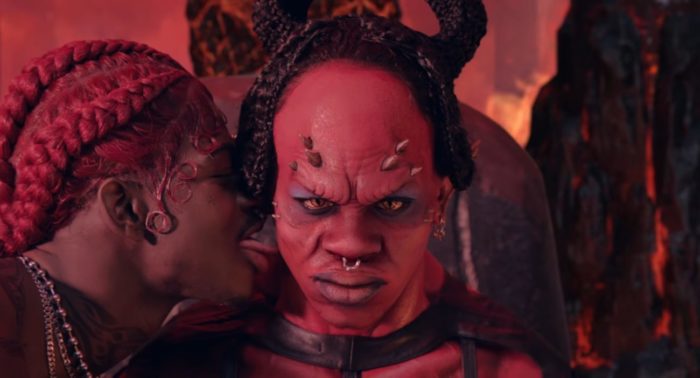
In 1980, after viewing an edited-for-television cut of The Exorcist, Patricia Frazier became convinced her daughter was also possessed by the devil. The grisly Texas death scene never mimicked anything from the film. Four-year-old Khunji Wilson was found stabbed seven times and had her heart removed from her chest. The resulting trial found Frazier innocent by reason of insanity, arguing that “spirits” told her to remove her daughter’s heart after seeing grass grow out of her chest. Four years earlier in California, Frazier had been institutionalized after suffering a nervous breakdown.
From Marco Margaritoff’s article, “Wichita Falls District Attorney Tim Eyssen claimed Frazier had pulled the wool over everyone’s eyes, alleging that Frazier had a history of beating her child and was so desperate to be free of the responsibilities of motherhood that she sliced her daughter open.” In this case, Frazier may have beaten the system by using both nations’ ongoing political arguments to her advantage and was able to grotesquely murder her daughter without seeing jail time.
The argument shouldn’t have been “The Exorcist made her do it.” It’s abundantly evident that Frazier, Michael Ryan, and the boys in the Bulger murder were predisposed, one way or another, to carry out this kind of violence. With all of these hyperviolent cases piling up, conversations could have started that pushed for better access to mental health research and treatment, and it may have saved lives instead of pointing the finger after the fact.
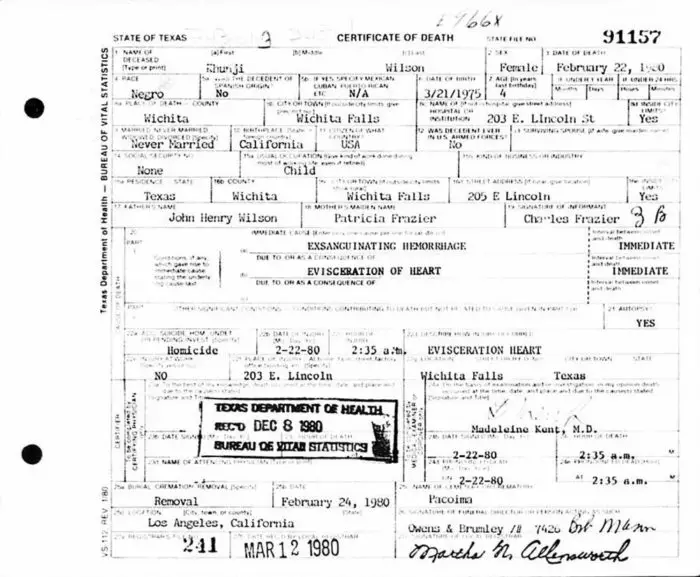
I’m not arguing for the dissolution of film censorship boards, and I understand their place in this world for parents who may not feel their child is age-appropriate for mature content. But that responsibility lies with the parents, and so should the consequences. Many films from the video nasty era still haven’t found their way out of exile.



